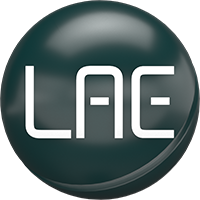Reverb vs Delay: What’s the Difference?
Reverb and delay are both effects used to create the perception of space and depth in a recording.
They operate in different ways and produce different results.
This video will explain the difference and give you some common ways to use Reverb and delay in a mix.
If you find this video helpful, please subscribe to help grow the channel.
This video is brought to you by DistroKid.
Over A million artists rely on DistroKid to get their music into Spotify, Apple Music, and all the major streaming services.
DistroKid makes music distribution fun and easy with unlimited uploads and artists keep 100% of their royalties and earnings.
DistroKid offers several great marketing tools like the Promo Card Generator:
Which lets you create a dozens of Promo Cards to that you can more easily promote your releases on social media.
Which lets you create a dozens of Promo Cards to that you can more easily promote your releases on social media.
It’s a completely FREE tool available to all DistroKid artists.
And If you haven’t already you can use this link to get 7% of your first years subscription with DistroKid.
So the first key difference between reverb and delay is:
- Density of Reflections: Reverb is designed to replicate the sound reflections that occur in an acoustic space.
It simulates the natural reverberation that occurs when sound waves bounce off many surfaces in a room, creating a dense and continuous wash of reflections that often lingers on after the original sound.
This reverb consists of a collection of many closely spaced reflections, resulting in a dense and continuous decay of sound.
It adds a sense of ambience, and spaciousness to the audio, as if it was recorded in a larger or more reverberant space.
Delay, on the other hand, produces discrete repetitions of the original sound, creating distinct echoes or repeats at specific intervals.
While reverb will mimic a whole bunch of diffuse reflections that end up forming that dense continuous wash I mentioned earlier.
Delay can be used to mimic a reflection off of a single wall, like the back of an auditorium.
Because of this, Delay creates a more pronounced rhythmic effect and can be used for precise timing or rhythmic patterns.
The second difference is how these effects are used in a mix.
- Placement in the Mix: Reverb is commonly used to create a sense of space and depth in a mix.
It is often applied to individual tracks to simulate different acoustic environments or to blend different elements together.
One reverb bus could serve multiple instruments in a mix. we can adjust the send amount to control how much of the reverb sound we are adding to each instrument. (One long reverb to blend layers of vocals)
Delay, on the other hand, is frequently used as an effect to add rhythmic interest or to create specific timing effects.
It can be applied to individual tracks such as vocals, guitars, or percussion.
It’s great for automating one time events like delay throws.Reverb and delay have different impacts on the original sound source.
Reverb tends to blend sounds together, making them feel more integrated with the environment, when used properly reverb can add a sense of cohesion to the mix.
Delay, on the other hand, creates distinct echoes that can add rhythmic interest to a sound.
In summary, reverb is used to simulate the sound reflections of a space, creating a sense of immersion and space, while delay produces discrete repetitions of the sound at specific intervals, adding rhythmic effects and timing precision.
Both effects have unique applications and can be used creatively to enhance your audio recordings.
So I hope these examples give you some ideas to work with. Leave a like if this video helped you out, and remember that these reasons should be considered in context.
Ultimately, the artistic intent and specifics of a recording should guide your decision of what tool is needed to get the result you desire.
There are many great uses for effects like reverb and delay, and if you’re confused on how to use them in combination, you can check out this video.
Thanks for watching and happy mixing.




